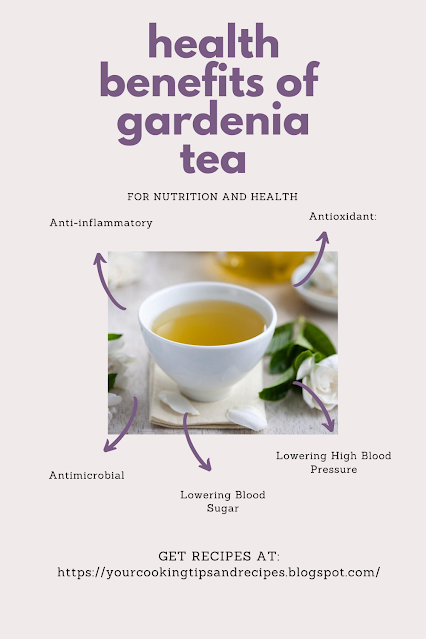Hi Foodies! If you have high blood pressure or diabetes, this drink is for you! Today, we will be talking about Gardenia Tea. It is made from Gardenia extract, a natural extract derived from the Gardenia jasminoides plant, also known as the Cape jasmine. It is commonly used in traditional Chinese medicine and is believed to have anti-inflammatory, antioxidant, and antimicrobial properties. It is also used in skincare and haircare products for its moisturizing and brightening effects.
Today, some energy drinks have incorporated Gardenia extract and have seen improvements in their health for those people who drink it for consumption.
What I will share today is how to make gardenia extract tea and just need 2 ingredients:
Note: It is not advisable to use the extract powder or liquid form to make this kind of tea, as they could be artificial. Also, consult with a medical professional before consuming any herbal tea as it may have some side effects or interact with your current medication.
Here are the known Health Benefits of Gardenia Extra Tea
Today, some energy drinks have incorporated Gardenia extract and have seen improvements in their health for those people who drink it for consumption.
What I will share today is how to make gardenia extract tea and just need 2 ingredients:
- Fresh or dried Gardenia jasminoides flowers
- Hot water
- Sugar(if you want a little bit of sweetness)
Instructions:
- Start by picking or purchasing fresh or dried Gardenia jasminoides flowers.
- Place a small handful of the flowers in a tea infuser or strainer.
- Bring a pot of water to a boil and pour it over the flowers.
- Allow the tea to steep for 3-5 minutes, or until it reaches your desired strength.
- Remove the infuser or strainer and discard the flowers.
- Enjoy your gardenia extract tea while it's warm.
Here are the known Health Benefits of Gardenia Extra Tea
-Anti-inflammatory: Gardenia extract may have anti-inflammatory properties that may help reduce pain and swelling.
-Antioxidant: Gardenia extract is rich in antioxidants, which can help protect the body from damage caused by harmful molecules called free radicals.
-Antimicrobial: Gardenia extract may have antimicrobial properties, which can help fight against harmful microorganisms such as bacteria and fungi.
-Lowering High Blood Pressure: Gardenia extract is traditionally used to lower high blood pressure.
-Lowering Blood Sugar: It is believed that Gardenia extract can help lower blood sugar levels in people with diabetes.
-Pain relief: It is believed that the extract may be useful in treating pain in conditions such as headaches, menstrual cramps, and other types of pain.
In conclusion, making gardenia extract tea is a simple and easy process. By using fresh or dried Gardenia jasminoides flowers, you can enjoy the potential health benefits of this traditional Chinese medicine. Remember to always consult with a medical professional before consuming any herbal tea, and to enjoy your gardenia extract tea while it's warm. Happy brewing!
In conclusion, making gardenia extract tea is a simple and easy process. By using fresh or dried Gardenia jasminoides flowers, you can enjoy the potential health benefits of this traditional Chinese medicine. Remember to always consult with a medical professional before consuming any herbal tea, and to enjoy your gardenia extract tea while it's warm. Happy brewing!


Comments
Post a Comment